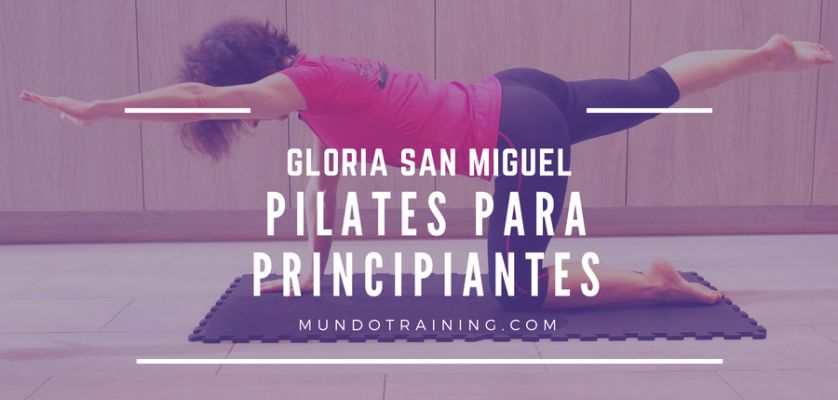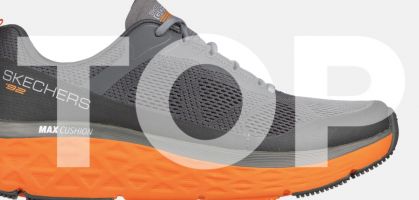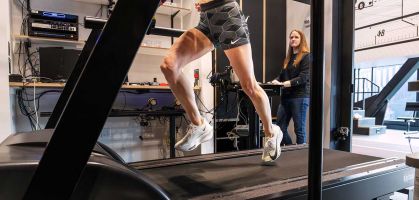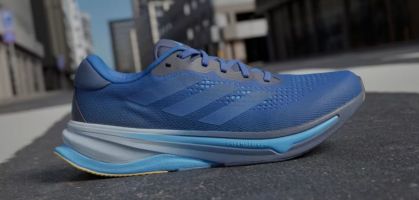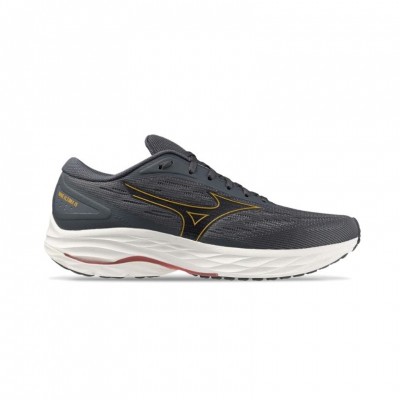Initially Joseph Pilates designed 34 floor exercises without implements that are considered the universal repertoire of the method, and are collected in his second book: Return to Life through Contrology (Return to Life through Contrology). This list of exercises has been increasing until there are currently about 500. Some of them have been modified to adapt to the current scientific evidence, but without losing their essence.
For the execution of the exercises should always take into account the principles and progression, that these are performed in a logical order and in a smooth sequence. So get your Pilates/Yoga shoes ready and let's get started!
The movements of the Pilates method are based on the following principles:
Concentration:
Concentrate on the correct movements each time the exercise is performed. Concentration leads to mastery of the exercises and increases the total conception of one's own body or proprioception. It is necessary to be conscious of the totality of the body when executing. It is not a matter of mechanically repeating the exercises, but of mentally controlling each movement, removing other thoughts from our mind.
Centralization:
Movements start from the core muscles, what Joseph Pilates called Power House, which comprises the front, lateral and posterior abdominal girdle. Start the movement from the center to the periphery and has the center line of the body as a reference point.
Control:
Move with control, rhythmically, with the body aligned and not impulsively or abruptly.
Breathing:
This is the key to Pilates. Move with a natural and fluid breathing. Breathe in through the nose and breathe out completely through the mouth. Breathe fully through lateral costal breathing, with lateral, upper and posterior inspiration to deepen the core musculature.
During inhalation the ribs open outwards and upwards at the same time as the spine lengthens upwards, thus filling the lungs with oxygen to the maximum. When inhaling it is very important not to relax the abdominal muscles in order to avoid losing postural alignment and using the wrong muscles during the execution of the exercises. Breathing facilitates the stability or mobility of the commune. The correct use of this mechanism in the execution of the exercises provides safety and avoids injuries.
Each movement has its own breathing. Inhaling increases muscle tone and exhalation facilitates body relaxation and contraction of the abdominal muscles because anatomically during it there is a shrinkage at the level of the rib cage "inward and downward". On the exhale the diaphragm rises thus generating an inward thrust of the abdominal muscles, which creates a strong energy center or "Power House", which is fundamental to the core stabilization process. Breathing should at all times be slow, continuous and, during it, should seek to perform inhalations and exhalations of the same duration in order to allow an optimal oxygen-carbon dioxide gas exchange in the body.
Breathing is fundamental, but it is important to avoid concentrating only on breathing.
Precision:
It is based on concentration and control. Quality is prioritized over quantity. Few repetitions and many different movements so that precision is practiced without fatigue and reinforced often to educate movement patterns and allow correct alignment. Movement is carried as far as everyone controls without compensation.
Fluidity:
Movements are smooth but dynamic with continuous and fluid execution, paced with the breath. This must be based on a correct central stabilization. Fluid movements allow functional transfer to daily life.
The Pilates mat exercises (Mat Work) form the basis of the method. Before starting the Pilates method, it is necessary to know and practice the Fundamentals (those previous exercises that teach how to program a motor pattern and that are related to a Pilates one) and other pre-Pilates exercises that will provide the body with the stability and body awareness necessary to perform more advanced exercises. They are used to focus the body and mind at the beginning of a session, polish specific aspects of an exercise by emphasizing the primary biomechanical pattern, improve movement quality, precision and technique, help identify and strengthen the movement chain and address personal needs.
Between 3 and 8 repetitions are done per exercise (those performed with one limb will be 3 repetitions per side).
In beginners the most suitable Fundamentals and pre-Pilates exercises are:
Breathing:
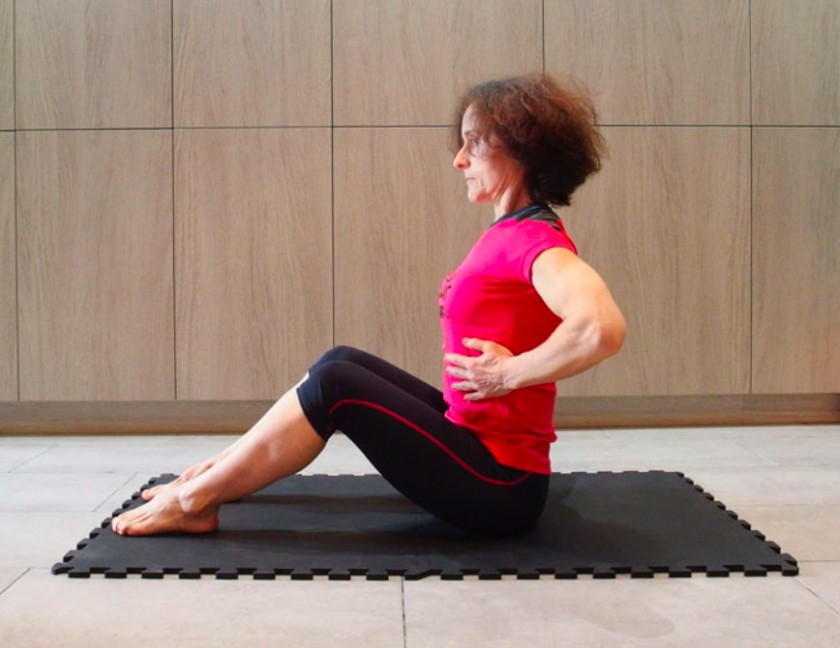
In Pilates, lateral breathing should be practiced. This technique allows you to hold the abdominals gently and at the same time keep the upper body relaxed.
To practice lateral breathing: Align standing or sitting with your feet hip-width apart, pelvis neutral, shoulders down, place your hands on your rib cage, on the sides of your ribs. Inhale through the nose expanding the rib cage in three dimensions and allowing the air to slowly expand and fill the lungs so that the ribs open outward laterally toward the hands without expanding your belly. Exhale through the mouth actively and slowly, collapsing the ribs as far as possible toward the midline.
Pay attention first to the pelvic floor and transverse. As you exhale more deeply, the obliques will activate to help expel the air.
Do not allow the chest to rise, or the rib cage to rise (widen laterally, not lift) or the shoulders to come toward the ears.
- Repeat 3 to 5 times.
Iso-Abs:
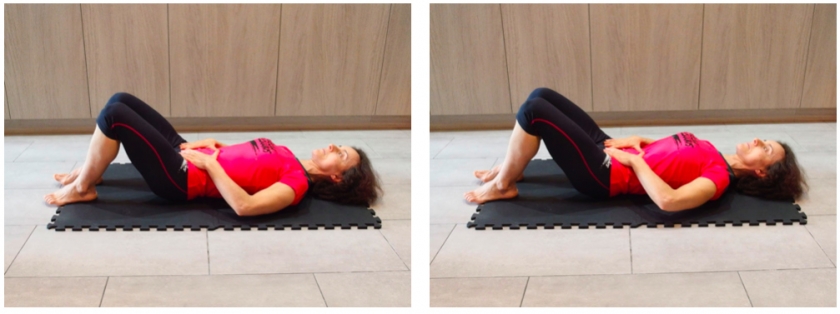
From lying on your back (supine lying) with legs bent at about 90 degrees and feet parallel and hip-width apart and pelvis neutral. Place the thumbs together at the navel and the index fingers together over the pubic bone. The fingers will check that the exercise is executed correctly.
Breathe in deeply through the nose, then exhale through the mouth and perform isometric contractions with the abdominals without bulging outwards, thanks to the contraction of the transverse abdominals, as if pulling the belly towards the spine.
- Repeat 3 to 5 times, holding the contraction for about 5 seconds.
This exercise should be automated and maintained constantly throughout each Pilates movement.
Clock Work:

From supine lying with legs bent at about 90 degrees and feet parallel and hip-width apart and pelvis neutral. Place hands on iliac crests.
Perform pelvic movements, swinging the pelvis in anteversion (hollowing the lower back) and retroversion (flattening the lower spine). Press and hold for 3 seconds in each position.
- Perform 5 repetitions.
Visualize the rocking motion as a bowl of water.
This exercise is related to Rolling Like a Ball.
Rib Cage Arms:

From supine lying with legs bent at about 90 degrees and feet parallel and hip-width apart, spine neutral and belly to spine.
Inhale to raise your arms skyward with palms facing each other and as you exhale bring them backward next to your head. Inhale and exhale to do the opposite movement until you bring your arms to the floor.
Keep the arms stretched throughout the whole movement and the spine neutral, without dragging the ribs or the pelvis. Maintain the lower back position and the Power House contraction.
- Perform 5 repetitions.
This exercise is related to Roll Up.
Head Nods, Neck Curls, and Hundred.
Head Nods:

From supine lying with legs bent at about 90 degrees and feet parallel and hip-width apart and pelvis neutral.
Inhale and exhale with a neck flexion movement keeping a space between the chin and the acromial space as if holding a tangerine. Inhale extending the neck while looking up to the sky. The movements should be smooth and continuous.
- Perform 5 repetitions.
Neck Curls:

Start the same as above, exhale by raising the head and continue to raise the upper part of the dorsal spine, separating the shoulders from the floor. Inhale and descend slowly.
Maintain in both movements the contraction of the transversus abdominis.
- Perform 5 repetitions.
Hundred:
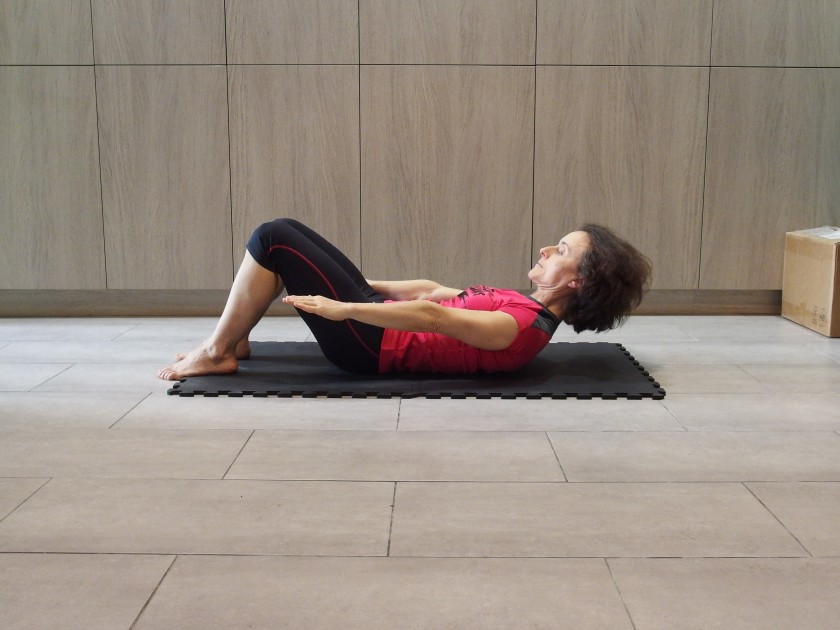
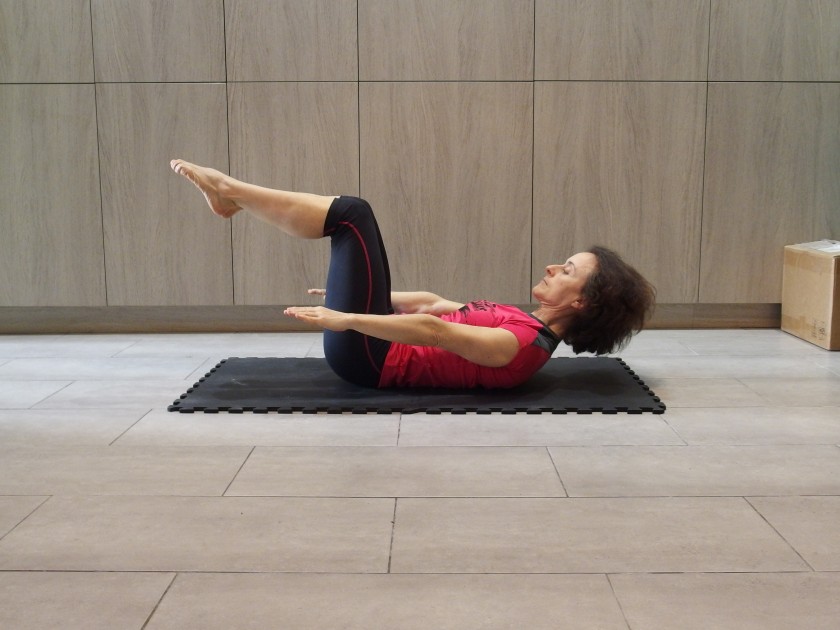
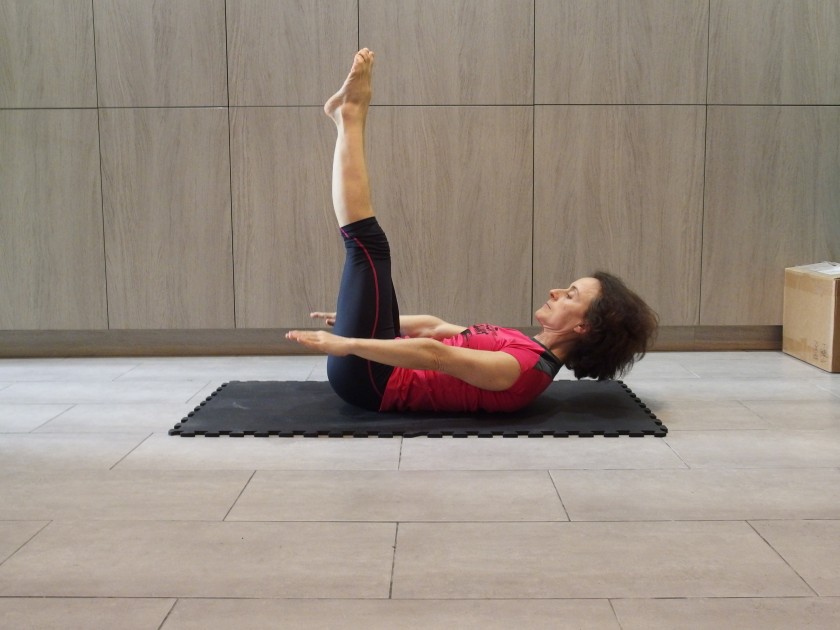
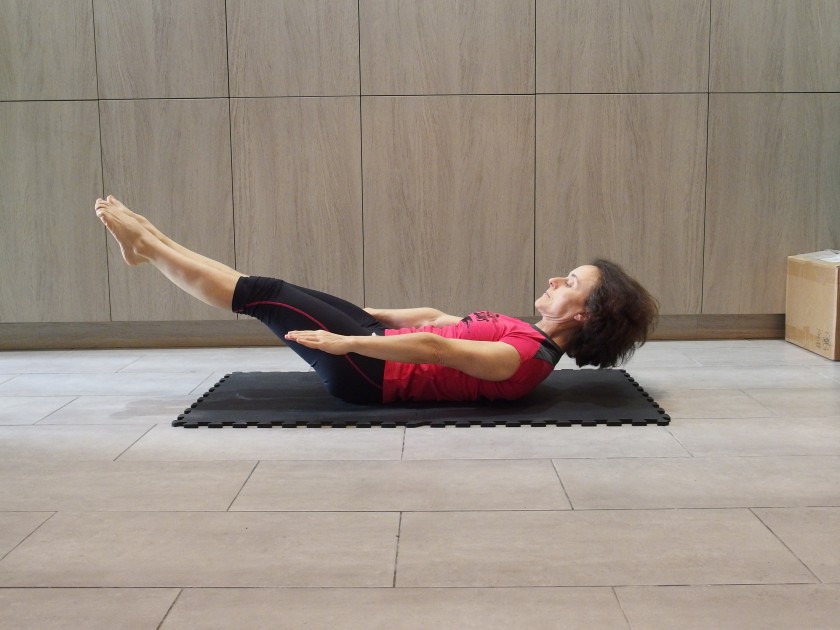
(100 pumps with 10 full breaths: 5 pumps on inspiration and 5 on expiration).
Get into the supine position. Slightly raise the shoulders and head off the ground, keeping a certain distance between the chin and the sternoclavicular area, elongating the neck in flexion. Bring the arms elongated next to the body, at hip height with hands outstretched and palms facing down. Position the legs according to the possibilities of each one (from less to more difficulty: legs bent with the feet on the floor, in Table Top, stretched at 90, 60 or 30º with respect to the floor).
Connect the shoulder blades well from behind. Inhale, making 5 small pumping movements with your arms. Exhale and perform 5 more arm pumps.
Continue up to 100 pumps or 10 full breaths.
Do not perform this exercise if you have not mastered the previous ones. Move from the simpler variation to a more complicated one as vaya progress.
Knee Folds and Alternating Leg Reaches.
Knee Folds:
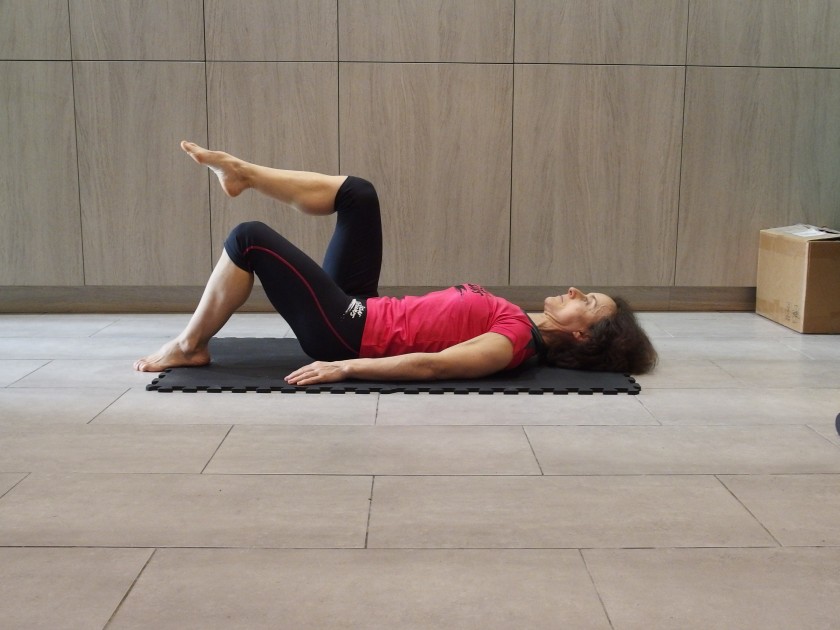
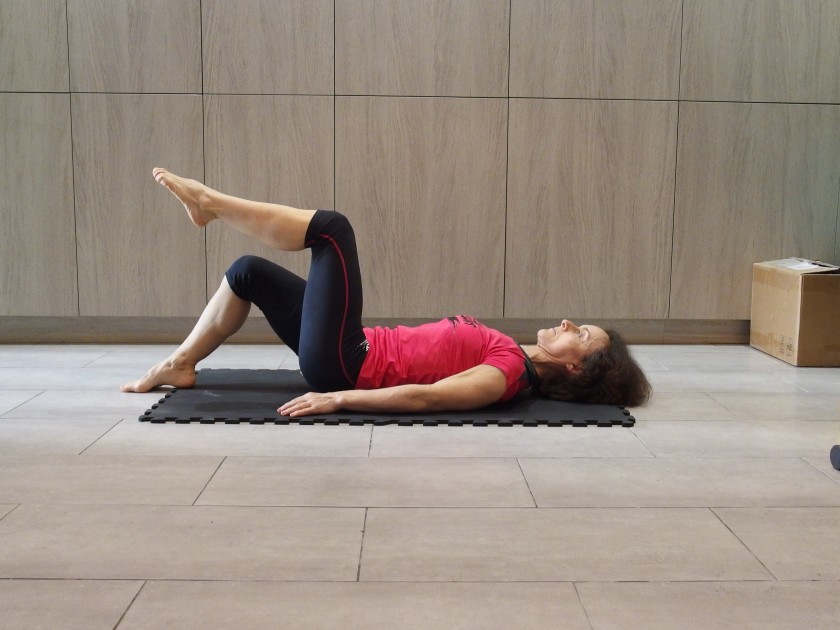
Lay supine with legs bent at 90°. Engage the transverse abdominis by bringing the lower abdomen toward the spine. Inhale to prepare and exhale as the leg is lifted from the hip while maintaining knee flexion at 90°, inhale and exhale to lower the leg to place the foot on the floor (do not drop the leg). Repeat with the other leg.
- Repeat for 5 times per leg.
Exercise related to One Leg Circles.
Alternating Leg Reaches:
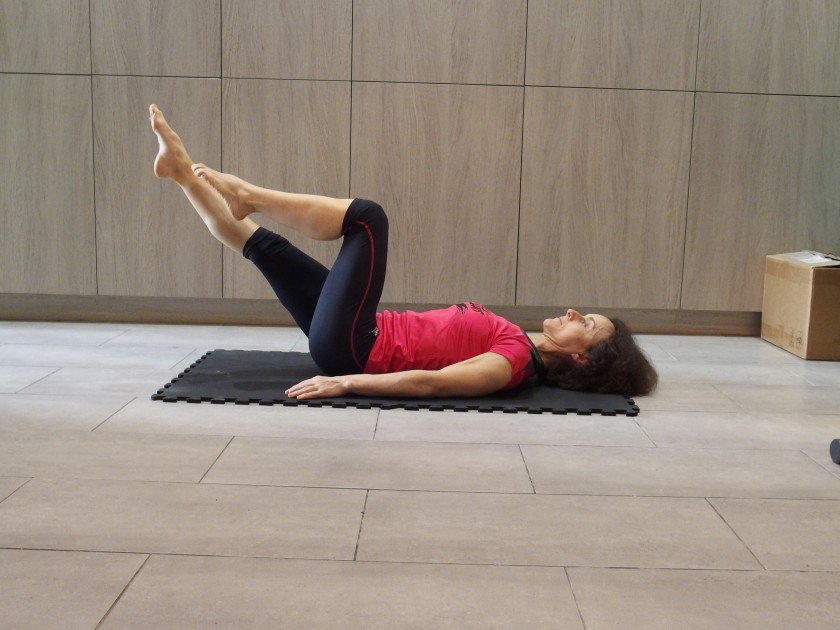
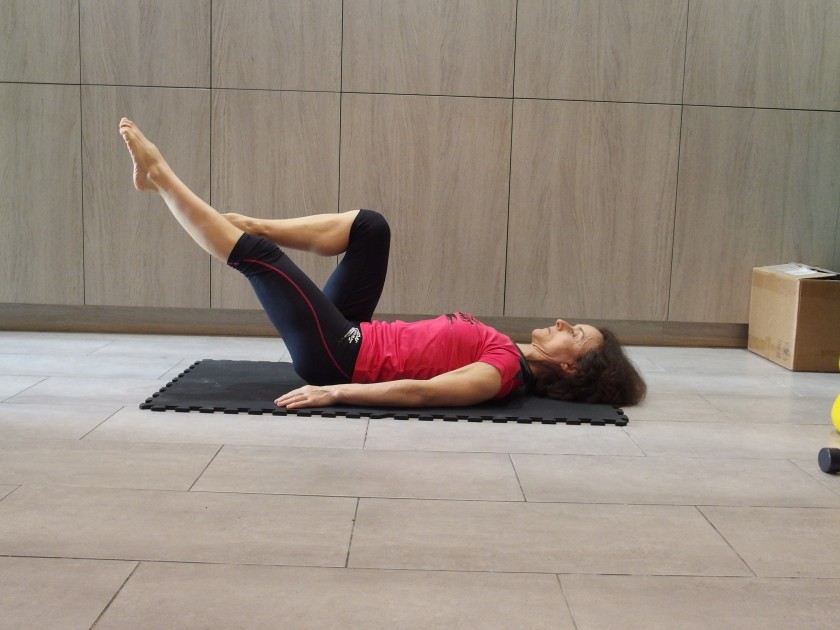
Raise legs to Table Top position (tabletop position), first one leg and then the other.
Inhale to prepare. Exhale to extend one leg long at a 45-degree angle, while keeping the transverse abdominis engaged.
Inhale to bring the leg back, then exhale and lengthen the other leg.
- Repeat for 5 times per leg.
Quadrupeds:
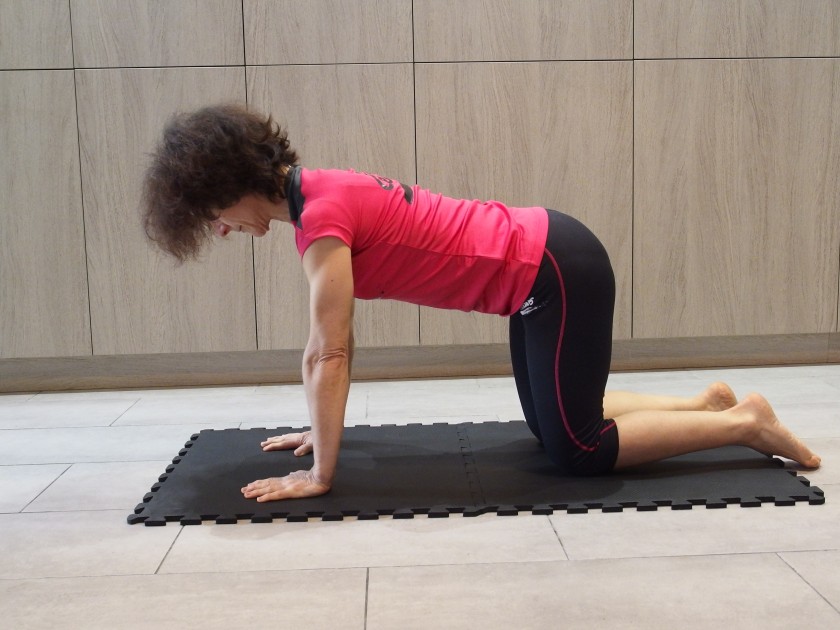
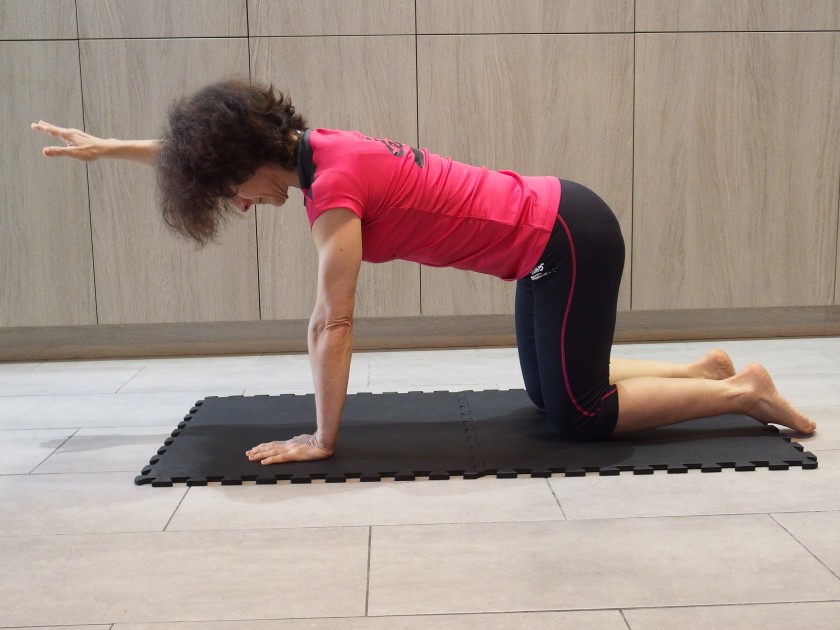
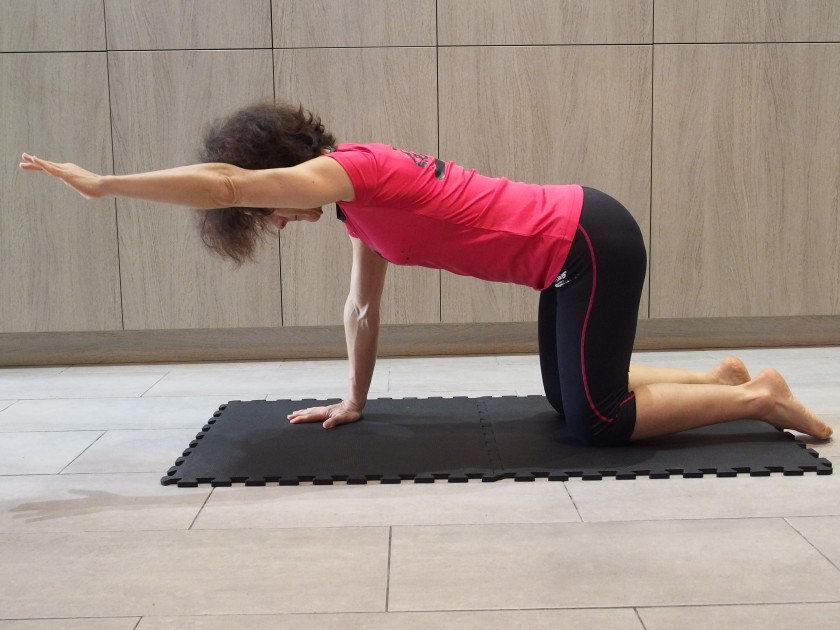
This is a series of exercises starting from the same position and varying in difficulty. They work on central stability, the perception of the neutral alignment of the spine and dissociation of the upper and lower limbs.
The starting point is the support on hands and knees aligned under the shoulders and hips respectively, with the pelvis and spine neutral, with a correct alignment of the sacrum, vertebral curvatures and occipital. The tips of the feet are also in contact with the ground.
First stabilize the shoulder girdle and head by bringing the scapulae into retroversion to activate the latissimus dorsi.
Dissociate upper limb: inhale to prepare and exhale to raise the arm stretched to the front avoiding raising the shoulder. Hold the position for 3 seconds. Inhale and exhale and slowly descend while maintaining stability. Repeat with the other arm.
- Perform 3 repetitions for each arm.
Dissociate lower limb:
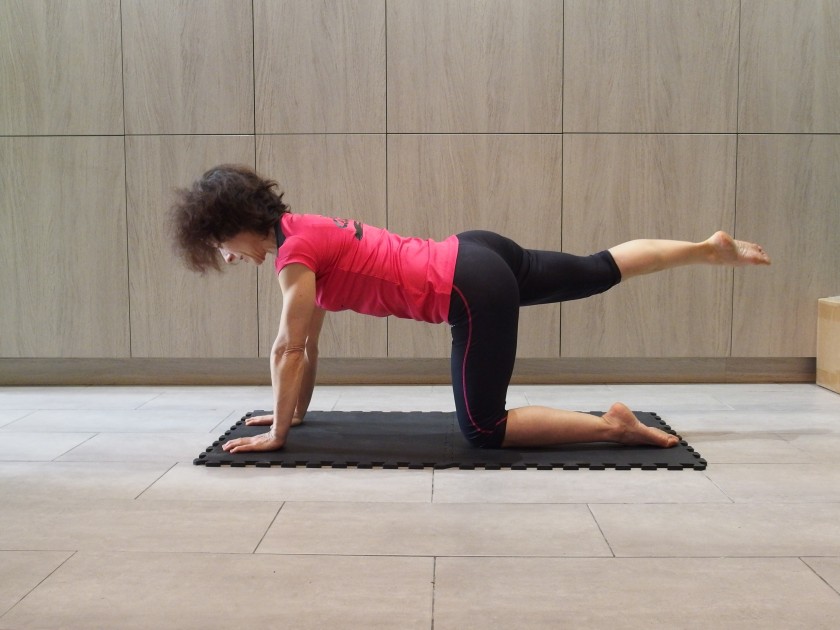
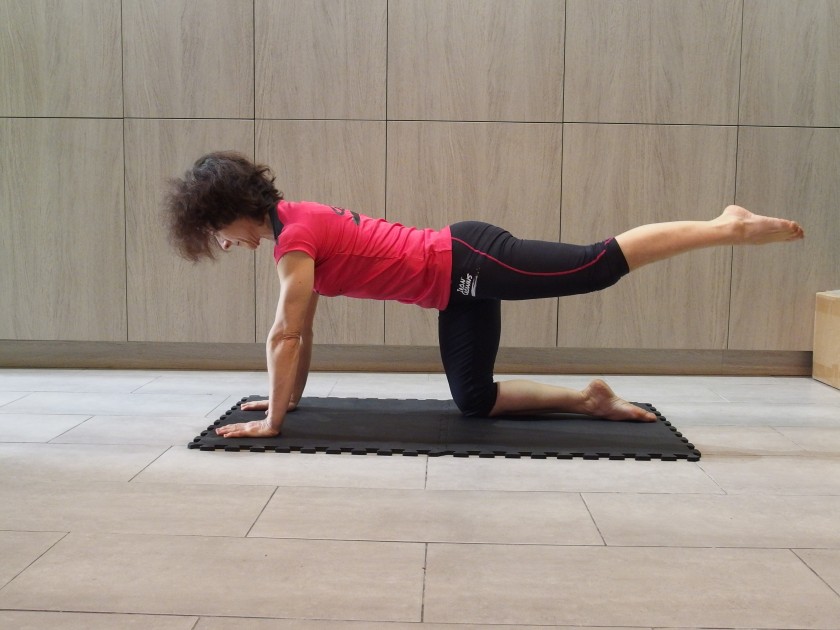
Inhale to prepare and on exhale raise the straight leg backward by lengthening it avoiding hip rotation and keeping the pelvis level.
Hold the position for 3 seconds. Inhale and exhale slowly descend while maintaining stability. Repeat with the other leg.
- Perform 3 repetitions for each arm.
The more advanced version consists of raising arm and leg at the same time on the opposite side, trying not to lose central stability or the neutral position of the spine and avoiding raising the shoulders or tilting the pelvis. Hold the position for 3 seconds.
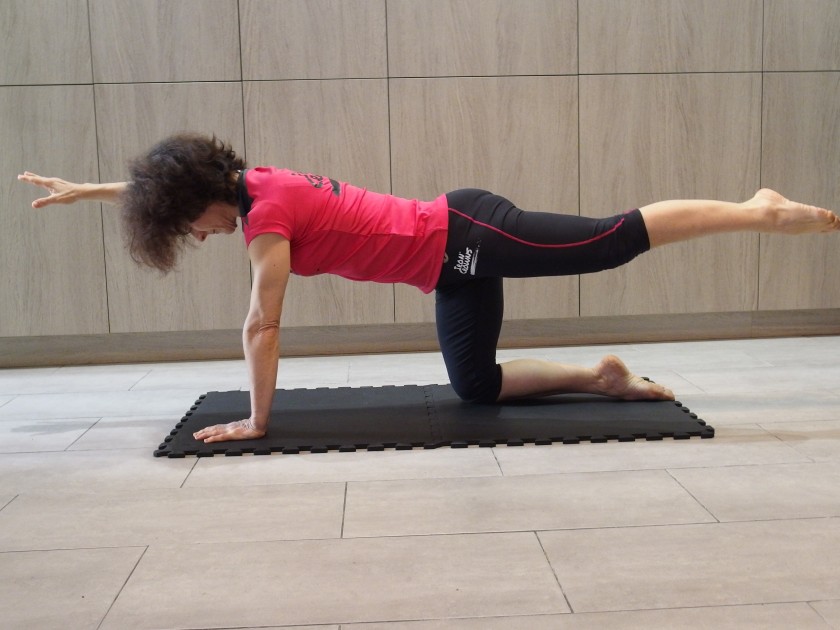
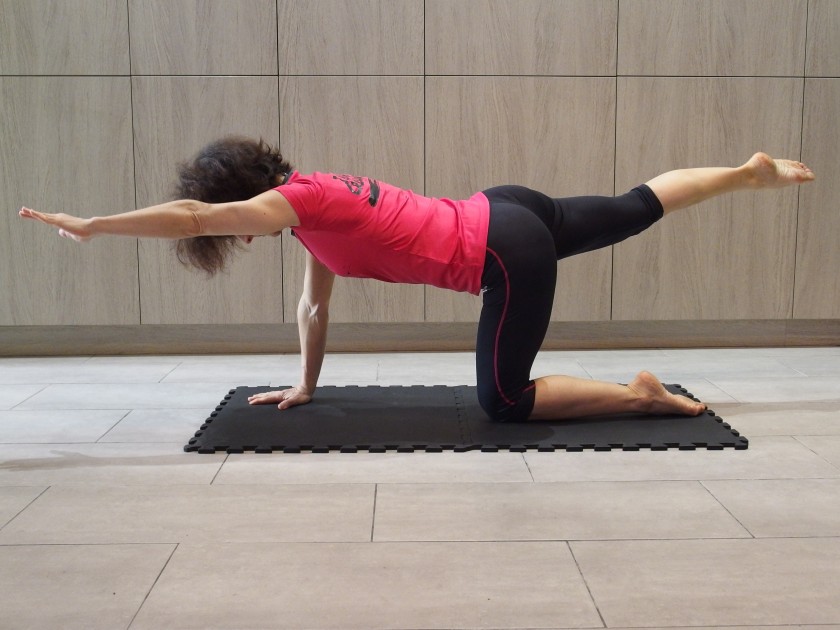
Perform 3 repetitions on each side.
Swan and Flight
Swan:
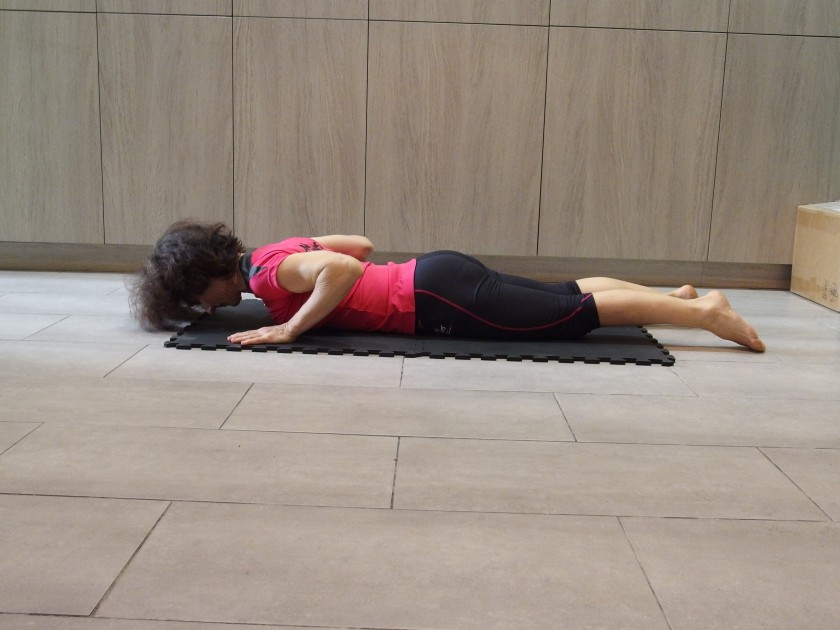
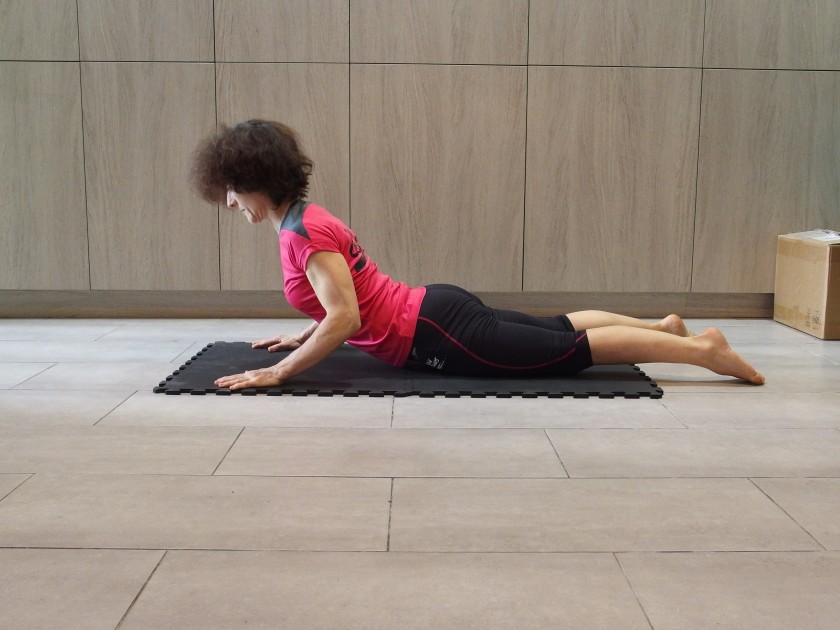
Lying in a prone position. Place arms flexed with palms on the floor next to shoulders. Legs straight and feet hip-width apart.
Inhale, start lifting the torso by stretching the neck and continue pushing with the arms (it is not necessary to stretch the arms completely). Be careful not to separate the iliac crests from the floor. Keep the shoulders low, away from the ears and pull the shoulder blades down, squeezing through the middle of the back.
Hold the lengthening position for 5 seconds. Exhale and lower the torso gently toward the floor.
- Repeat 5 times.
Flight:
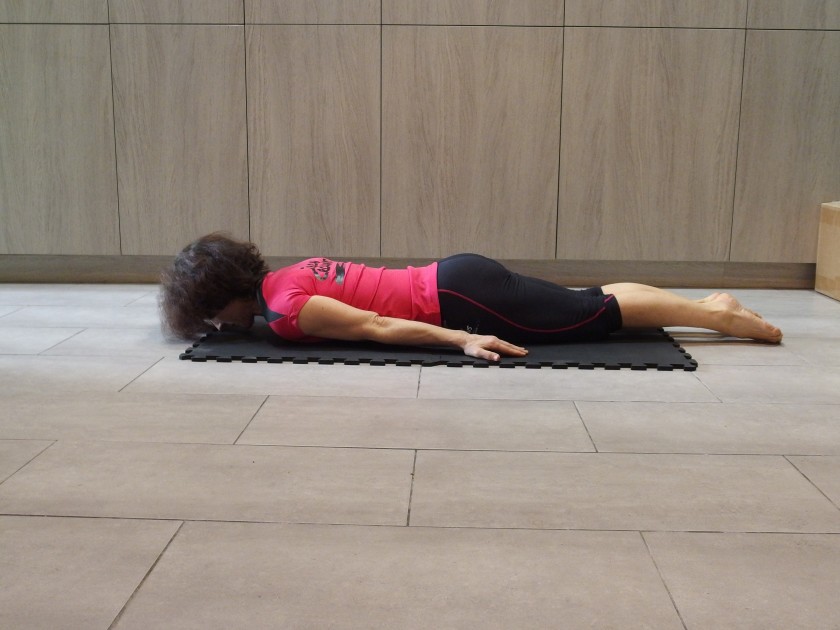
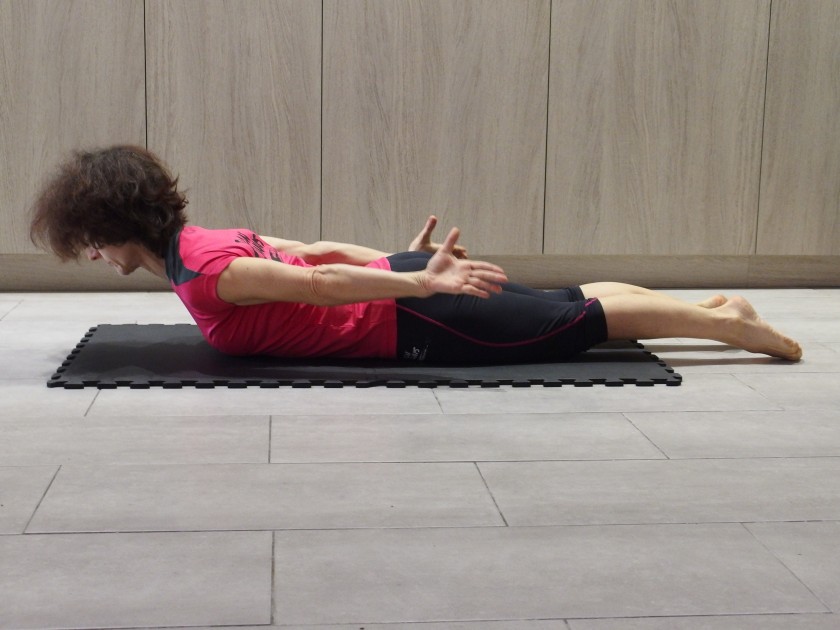
Lying prone. Place arms down at the sides of the trunk, palms down and feet in Pilates position (legs in external rotation with heels together and toes apart).
Inhale, slightly lift the torso and lengthen the neck. Raise the arms in slight external rotation from the shoulders (palms facing outward with thumbs pointing skyward) and pull the shoulder blades squeezing through the mid back.
Hold the lengthening position for 10 seconds. Exhale and gently lower the leg back to the floor.
- Repeat 5 times.
Shoulder bridge:
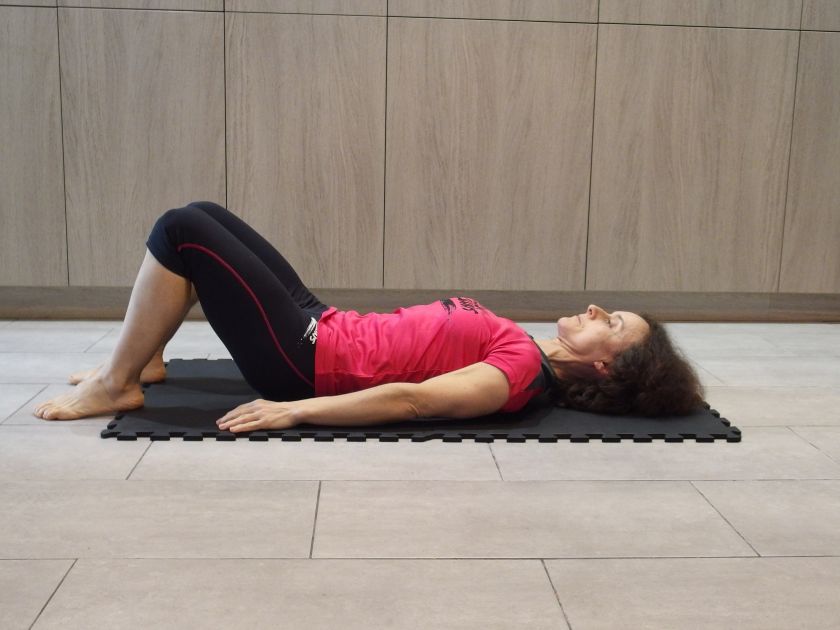
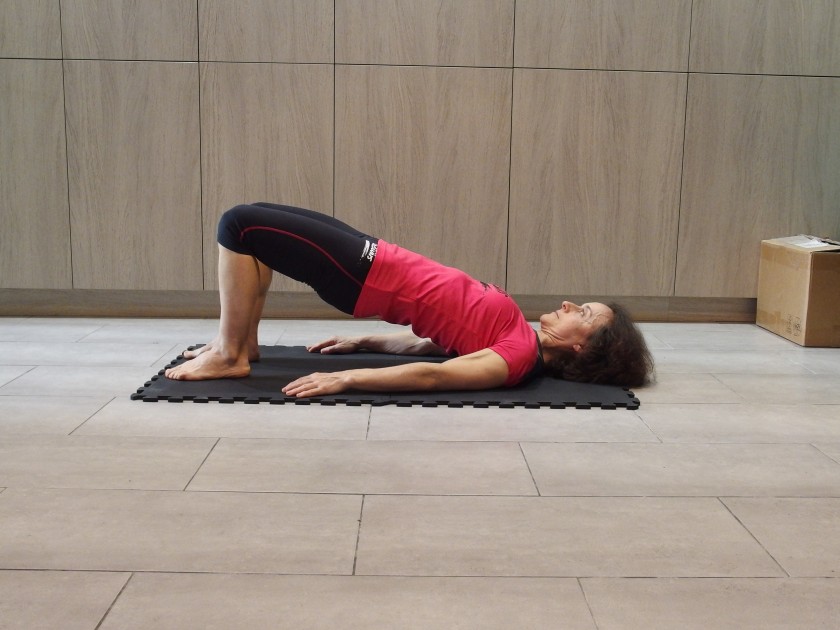
Lie supine with neutral spine position. Legs bent at 90º hips, knees and ankles aligned. Inhale to prepare and exhale to lift the pelvis towards the sky keeping the spine neutral from the shoulders to the hips. Inhale and exhale to lower the spine towards the floor, vertebra by vertebra, articulating the spine well.
Repeat 5 times.
Leg Pull Front Support Only:
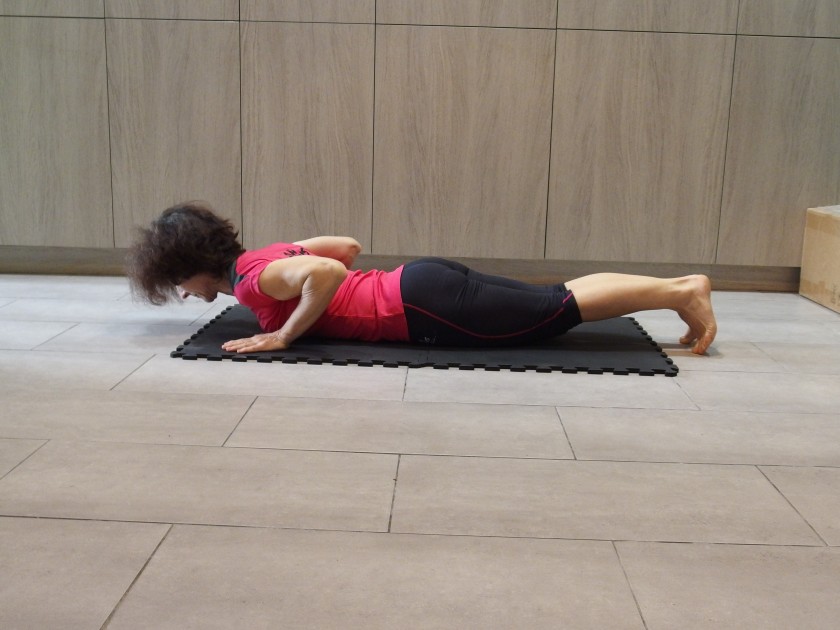
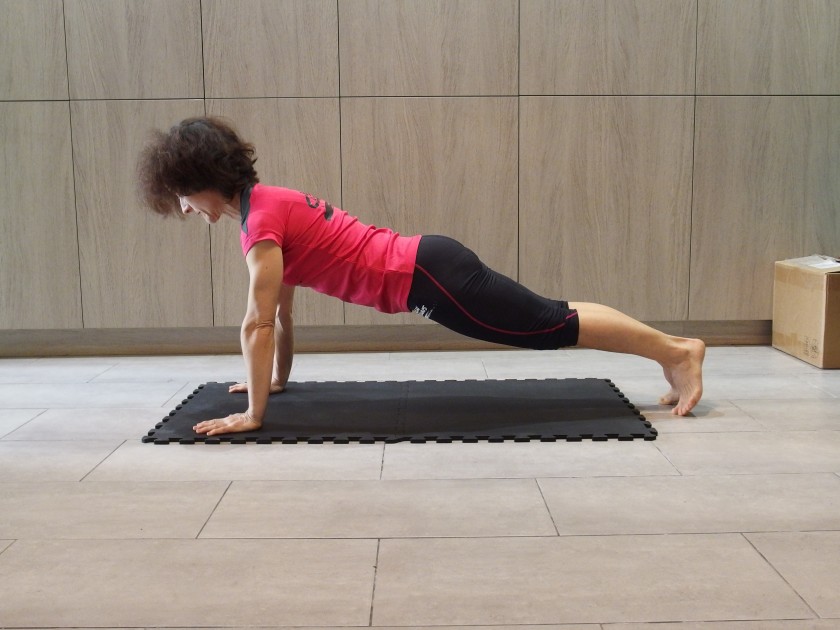
Lying in prone position. Place arms bent with palms flat on the floor next to shoulders. Legs straight and feet together in Pilates position.
Inhale, push with the arms stretching them all the way and separate the iliac crests from the floor keeping the plank position all the time. Keep the shoulder blades retracted, close to the ribs and the spine neutral. Lengthen from the crown of the head to the heels.
Hold the lengthening position for 5 seconds. Exhale and gently descend to the floor while maintaining the plank position.
- Repeat 3 times.
Main routine instructions:
Perform the exercises in a fluid manner, moving from one exercise to the next with little or no rest (one exercise flows into the next).
Perform the exercises as correctly as possible. Each repetition should be performed with good technique. The exercise should be stopped when the execution becomes distorted.
Relax the muscles after each exercise to avoid stiffness.
Finish the routine with muscle stretching exercises: pectoral stretch; rest position; spine stretch forward; wall and floor roll down;cat; swan neck roll; mermaid stretch.
Bibliography:
Aparicio E, Pérez J. The authentic Pilates method. The art of control. 2nd edition. Madrid 2005. Ediciones Martínez Roca, S.A.
Ochoteco M, Colella S. Pilates method: theoretical-practical manual. 1st edition. La Plata 2011. Ediciones Al Margen.
Calvo J B. Pilates terapéutico. 1st edition. Madrid 2012. Editorial Panamericana.
Pilates Mat&Studio Pilates instructor course notes. Peak Pilates. Barcelona 2005.
Read more news about: Running News
